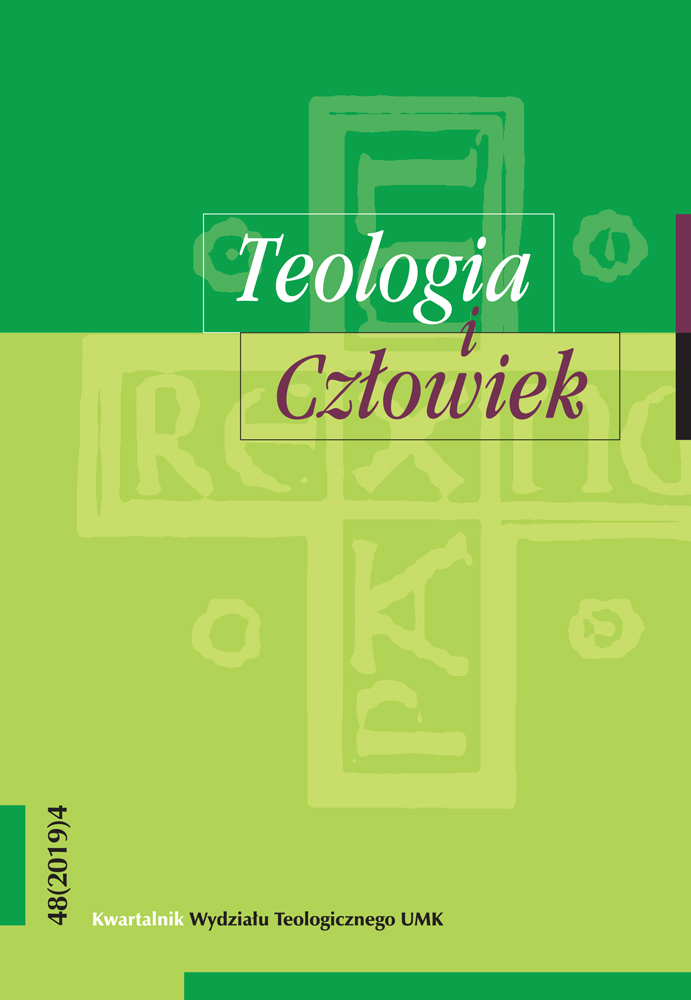Translation Features of the Peshitta Epistle of James
DOI:
https://doi.org/10.12775/TiCz.2019.046Słowa kluczowe
List Jakuba, technika translacyjna, Peszitta Nowy Testament, język syryjski, krytycyzm tekstualny Nowego Testamentu, teoria translacjiAbstrakt
Peszitta – List Jakuba. Charakterystyka tłumaczenia
Znajdujemy wiele opracowań dotyczących tłumaczenia Starego Testamentu w wersji Peszitta, niewiele zaś jest pozycji dotyczących tłumaczenia Nowego Testamentu w tejże wersji. Niniejsze studium pokazuje translatorski warsztat dotyczący tłumaczenia Listu Jakuba. Na początku, tłumaczenia odzwierciedlające greckie warianty tekstu, będą pokazane bez odniesienia do techniki translacyjnej. Następnie wskażemy charakterystyczne cechy tłumaczonej księgi, by ukazać technikę tłumaczenia. Tłumacz, będąc wiernym tekstowi greckiemu, dokonuje transformacji tekstu za pomocą syryjskich idiomów.
Bibliografia
Texts
Das Neue Testament in syrischer Überlieferung, I: Die grossen katholischen Briefe. In Verbindung mit A. Juckel, herausgegeben und untersucht von Barbara Aland. ANTT 7. Berlin: de Gruyter, 1986.
Novum Testamentum Graecum, Editio Critica Maior, IV: Catholic Letters. Part 1: Text and Part 2: Supplementary Material. Edited by The Institute for New Testament Textual Research. 2nd Revised Edition. Stuttgart: Deutsche Bibelgesellschaft, 2013.
Novum Testamentum Graece. Edited by Barbara and Kurt Aland, Johannes Karavidopoulos, Carlo M. Martini, and Bruce M. Metzger. 28th revised edition. Stuttgart: Deutsche Bibelgesellschaft, 2012. Accordance module NA28-T. Version 1.9.
Novum Testamentum Graece, Vol. 2. Edited by Constantinus Tischendorf. Editio octava critica maior. Leipzig: Giesecke & Devrient, 1872.
The New Testament in Syriac. London: The British and Foreign Bible Society, [1920]. Accordance module PESHNT-T. Version 3.0.
Studies
Balzaretti Claudio. The Syriac Versions of Ezra-Nehemiah: Manuscripts and Editions, Translation Technique and Its Use in Textual Criticism. Translated by Michael Tait. Biblica et orientalia 51. Rome: Gregorian & Biblical Press, 2013.
Brock Sebastian. The Bible in the Syriac Tradition. Second Revised Edition. Gorgias Handbooks 7. Piscataway: Gorgias Press, 2006.
Carbajosa Ignacio. The Character of the Syriac Version of Psalms, A Study of Psalms 90–150 in the Peshitta. Translated by Paul Stevenson. Monographs of the Peshiṭta Institute 17. Leiden: Brill, 2008.
Greenough J. B. et al. (eds.). Allen and Greenough’s New Latin Grammar for Schools and Colleges. Boston: Ginn and Company, 1903.
Metzger Bruce M. (ed.). A Textual Commentary on the Greek New Testament. Second edition. Stuttgart: Deutsche Bibelgesellschaft, 1994.
Morrison Craig E. The Character of the Syriac Version of the First Book of Samuel. Monographs of the Peshiṭta Institute 11. Leiden: Brill, 2001.
Nöldeke Theodor. Compendious Syriac Grammar. Translated by James A. Crichton. London: Williams & Norgate, 1904.
Pozzobon Mirko. La Peshitta del Secondo Libro di Samuele. Analecta Biblica 214. Rome: Gregorian & Biblical Press, 2016.
Sokoloff Michael. A Syriac Lexicon. Winona Lake: Eisenbrauns and Piscataway: Gorgias Press, 2009.
Williams Peter J. Early Syriac Translation Technique and the Textual Criticism of the Greek Gospels. Texts and Studies III, 2. Piscataway: Gorgias Press, 2004.
Pobrania
Opublikowane
Jak cytować
Numer
Dział
Licencja
CC BY ND 4.0. Posiadaczem prawa autorskiego (Licencjodawcą) jest Autor, który na mocy umowy licencyjnej udziela nieodpłatnie prawa do eksploatacji dzieła na polach wskazanych w umowie.
- Licencjodawca udziela Licencjobiorcy licencji niewyłącznej na korzystanie z Utworu/przedmiotu prawa pokrewnego w następujących polach eksploatacji: a) utrwalanie Utworu/przedmiotu prawa pokrewnego; b) reprodukowanie (zwielokrotnienie) Utworu/przedmiotu prawa pokrewnego drukiem i techniką cyfrową (e-book, audiobook); c) wprowadzania do obrotu egzemplarzy zwielokrotnionego Utworu/przedmiotu prawa pokrewnego; d) wprowadzenie Utworu/przedmiotu prawa pokrewnego do pamięci komputera; e) rozpowszechnianie utworu w wersji elektronicznej w formule open access na licencji Creative Commons (CC BY-ND 3.0) poprzez platformę cyfrową Wydawnictwa Naukowego UMK oraz repozytorium UMK.
- Korzystanie przez Licencjobiorcę z utrwalonego Utworu ww. polach nie jest ograniczone czasowo ilościowo i terytorialnie.
- Licencjodawca udziela Licencjobiorcy licencji do Utworu/przedmiotu prawa pokrewnego nieodpłatnie na czas nieokreślony
PEŁEN TEKST UMOWY LICENCYJNEJ >>
Statystyki
Liczba wyświetleń i pobrań: 622
Liczba cytowań: 0



